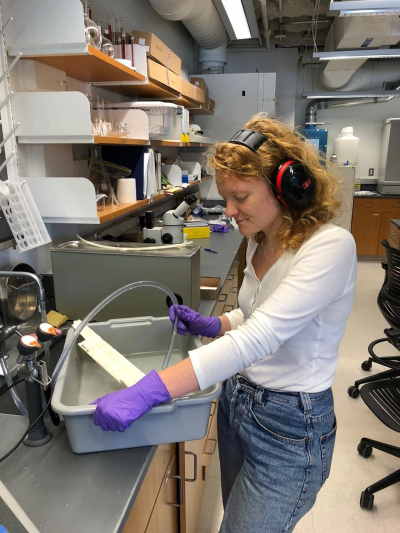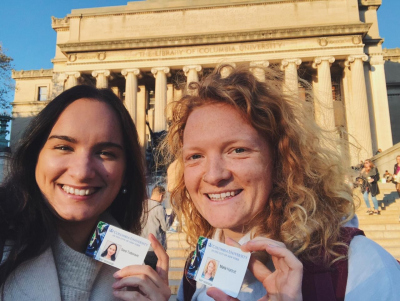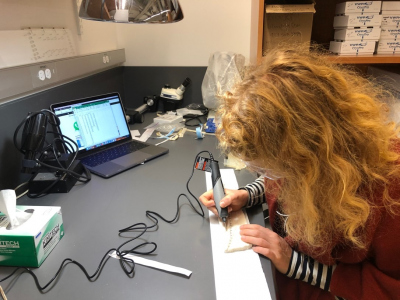- Graduate School GLOMAR
- PhD student reports
- Research Placements
- Marie Harbott
Marie Harbott
Report of GLOMAR PhD student Marie Harbott about her research placement at the Lamont-Doherty Earth Observatory, Columbia University in Orangetown, NY from 30 October until 27 November 2019
From the 30th of October until the 27th of November I had the opportunity to work at the Lamont-Doherty Earth Observatory of Columbia University in New York. In the course of my Ph.D project I will be working on the reconstruction of sea surface temperature, sea surface salinity, changes in pH, and the carbonate chemistry of the Caribbean Sea. In order to reconstruct different environmental factors I use the coral skeleton to measure trace elements, and different isotopes as proxies for environmental changes. Some of the coral cores needed for a reconstruction that includes multiple sites and species are with Prof. Braddock Linsley at LDEO in New York, so it was necessary for me to go and sample at the facilities of Columbia University.
Our project partner Professor Linsley has already supervised our Junior Research Group Leader Dr. Henry Wu during his Ph.D and gave me advice my project with his decades of experience in paleoclimatology and biogeochemistry. From the early 90s Prof. Linsley has been working on Coral Climatology and is a recognized expert in the field, having written over 60 published articles in journals, such as Nature and Science. Furthermore the renowned expert in boron isotopes Dr. Bärbel Hönisch is working on the LDEO campus as well which gave me the opportunity to talk to her about my boron measurement plans
Furthermore, there are numerous seminars each week on campus, with international lecturers. Terry Hughes from the James Cook University of Queensland gave a lecture on Coral bleaching and the future of corals, which gave me the chance to talk to this expert in the world of corals.
For one day Journalists from Reuther’s visited our host Prof. Braddock Linsley to write a story about him and his research in coral climatology. We assisted in explaining our sampling method as well as the how to read the different X-rays of the coral cores and the microscope in our laboratory. We had our first experience in talking to journalists directly and creating a link between natural sciences and the public. The results can be seen here, https://www.reuters.com/article/us-climate-change-corals/in-new-york-lab-centuries-old-corals-hold-clues-to-climate-shifts-idUSKBN1Y91DD, and here, https://graphics.reuters.com/CLIMATE-CHANGE-CORALS/0100B33V2CC/index.html.
On the weekends I was able to explore New York, that with its Halloween Parade and preparation of Thanksgiving had a lot to offer.
The research stay was a great and rewarding experience, making it possible for me to create new contacts at LDEO, learn from a different working environment, and learn from a different scientific culture





